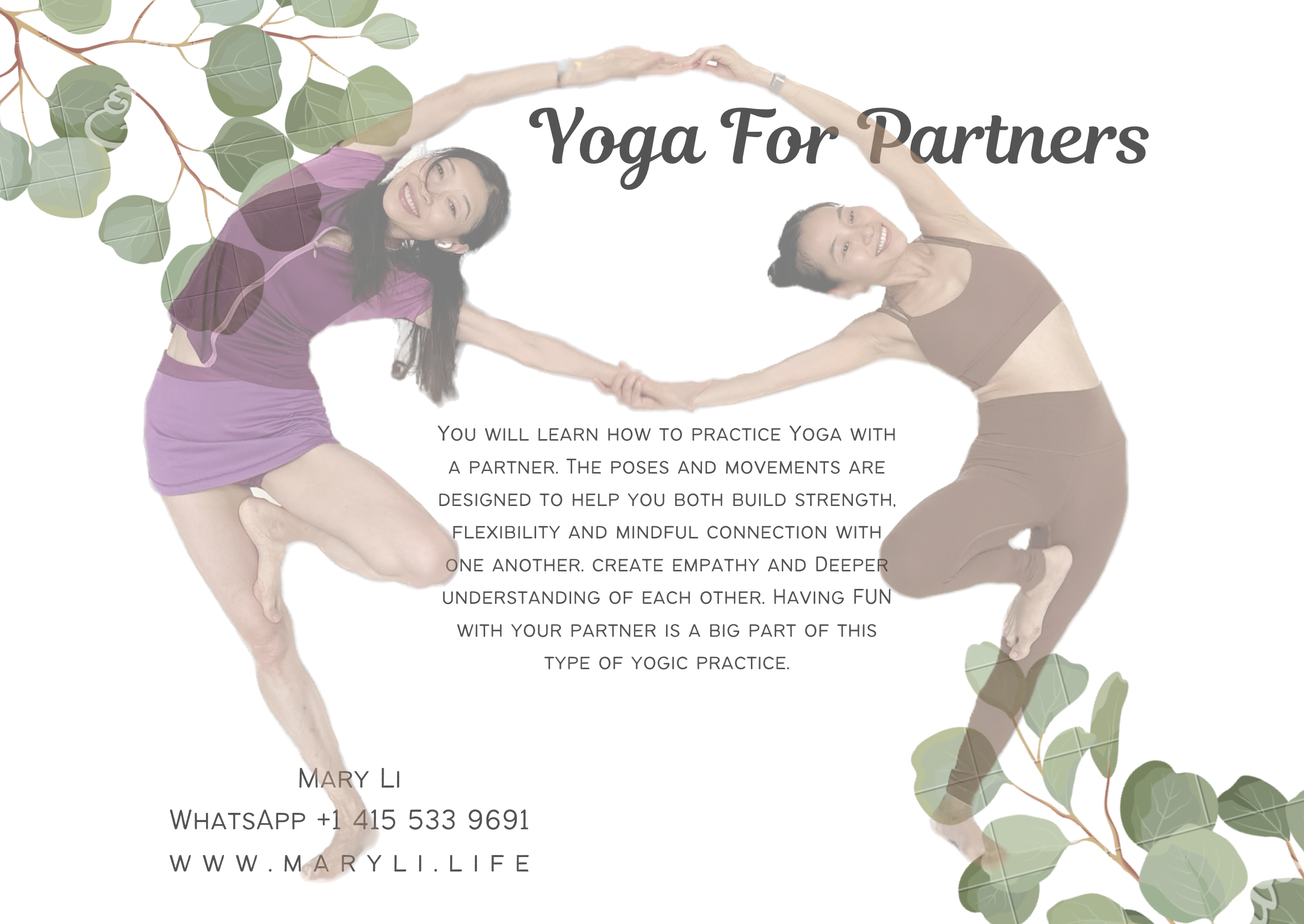Yoga For Partners



Partner yoga, also known as couples yoga, is a form of yoga that involves two or more people working together to deepen their practice. Partner yoga can be a fun and engaging way to build trust, improve communication, and enhance flexibility and strength. Here are some common types of partner yoga poses:
Partner Forward Fold:
Sit facing your partner with your legs spread wide.
Hold each other's wrists or forearms and lean forward, keeping your backs straight.
This pose provides a gentle stretch to the hamstrings and lower back.
Partner Tree Pose:
Stand side by side with your partner and lift one leg, placing the sole of your foot against the inner thigh or calf of the other person.
Hold hands or place them on each other's shoulders for balance.
This pose helps with balance and stability while stretching the hips and thighs.
Double Downward Dog:
Start in a downward dog position facing your partner.
Reach one hand back to hold your partner's hand while maintaining the downward dog position.
This pose stretches the shoulders, hamstrings, and calves.
Partner Boat Pose:
Sit facing each other, knees bent, and hold hands.
Lift your legs, balancing on your sit bones, forming a "V" shape with your bodies.
This pose strengthens the core and requires coordination between partners.
Back-to-Back Chair Pose:
Stand back-to-back with your partner, keeping your feet hip-width apart.
Bend your knees and sink into a seated position, creating a chair-like shape.
Hold hands or offer support by placing hands on each other's thighs.
This pose strengthens the thighs and lower back.
Flying Paschimottanasana:
Sit facing each other with your legs spread wide.
Reach forward and clasp each other's wrists, then extend your legs into a wide V shape.
This pose stretches the hamstrings, inner thighs, and lower back.
Trust Falls or Assisted Inversions:
These poses involve one partner supporting the other in inversions or backward bends, promoting trust and communication.
Partner yoga requires clear communication, trust, and cooperation between participants. It's essential to listen to your partner's cues, communicate openly, and be mindful of each other's abilities and comfort levels. Partner yoga can be a joyful way to deepen connections and share the benefits of yoga with others. If you're new to partner yoga, consider attending a class or workshop led by an experienced instructor to learn the techniques and ensure a safe practice.